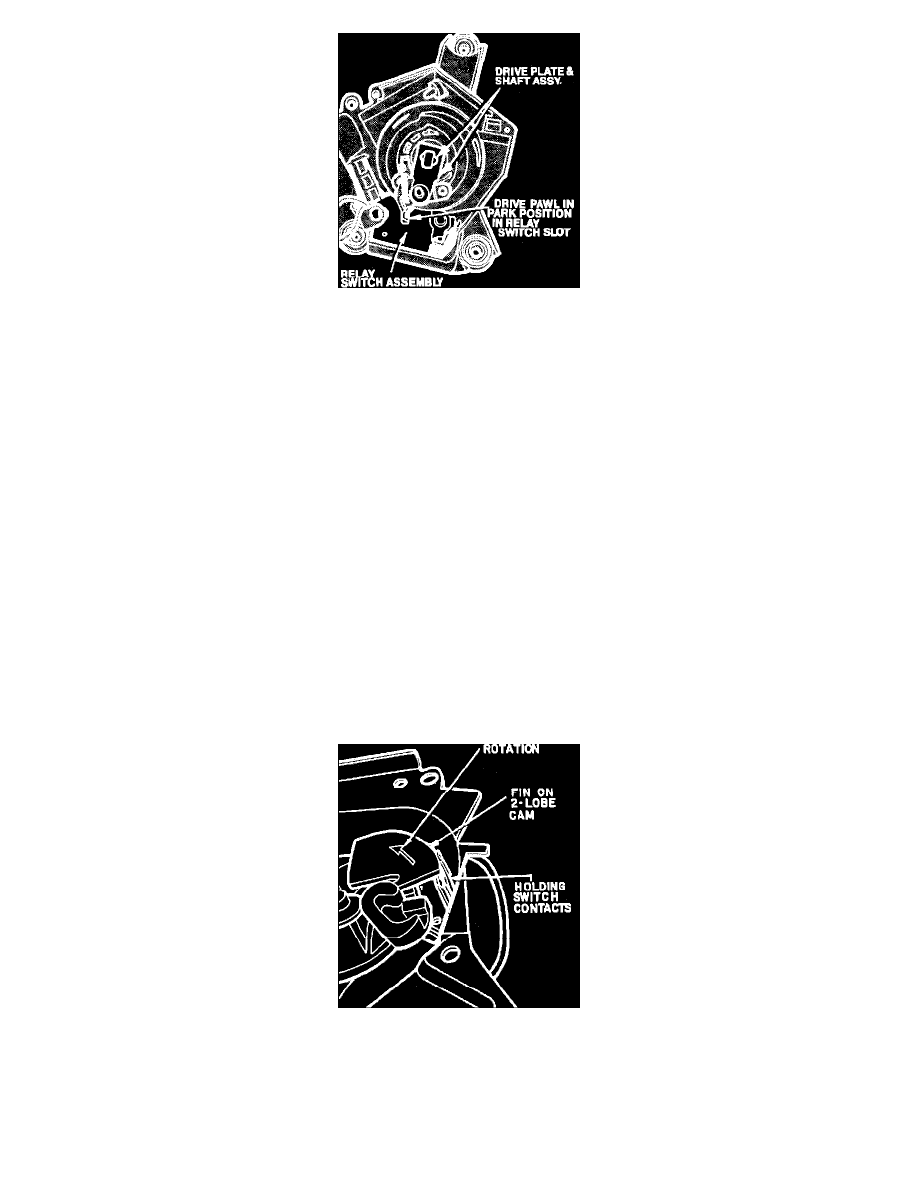Beretta V6-173 2.8L (1989)

Fig. 7 Gearbox Relay And Drive Gear Assembly, Shown In Park Position. Compound Wound Round Windshield Wiper Motor
Placing wiper switch in off position opens the circuit to the gearbox relay magnet switch. This allows a spring loaded arm to move into the path of the
output gear drive pawl, Fig. 6, while relay contacts remain closed. The shunt field is grounded through the wiper switch and the motor operates at low
speed, allowing the gear mechanism to park the wipers and stop the motor.
As the output gear rotates, the drive pawl engages the latch arm on the gearbox relay, and the output gear is unlocked from the drive pawl, lock pawl
and driveplate. Since the output shaft and gear shaft are off center, continuing rotation causes a cam action which moves the drive pawl into a slot in the
gearbox relay and allows wipers to move below their lowest point of normal travel. The drive pawl pushes the latch arm against the gearbox relay
contacts, opening the contacts and stopping the motor in park position, Fig. 7.
Multiplex Pulse Wiper Operation
Models with pulse wiper use a motor similar to the one used on standard systems, but with modifications to provide a delay wipe mode. The multiplex
system, while similar to earlier pulse wipe systems, uses an integrated circuit timer and the voltage feed to the wiper switch has been eliminated. In
addition to standard wiper system components, the multiplex system uses a variable resistor in the wiper switch, a pulse relay and holding switch
mounted in the washer pump, and a timer circuit. The timer, consisting of a capacitor and integrated circuit, is mounted on a circuit board in the washer
pump or contained in a separate module.
The gearbox relay functions in a similar manner on both standard and multiplex systems. However, on pulse systems the gearbox relay supplies
voltage to the pulse relay, current to the motor windings is controlled by the pulse relay, and voltage is supplied to the timer circuit from motor terminal
2. In all switch positions except delay, the gearbox relay, pulse relay and timer capacitor circuits are completed directly to ground through the wiper
switch. This deactivates the timer circuit and allows the motor to operate as outlined in Standard (Non-Pulse) Wiper Operation.
Placing wiper switch in delay position grounds gearbox relay terminals 1 (relay) and 3 (shunt field), and the timer capacitor is partially grounded
through the variable resistor, allowing it to charge at a controlled rate. When the timer capacitor is fully charged it activates the integrated circuit. The
integrated circuit completes the pulse relay ground circuit, and current flows through the motor windings.
Fig. 8 Pulse Wiper System Holding Switch. Compound Wound Round Windshield Wiper Motor
As the motor begins to operate, holding switch contacts close, the capacitor discharges partially, and the pulse relay ground is maintained by the
holding switch. As wipers complete their cycle, a fin on the washer pump drive cam opens the holding switch, Fig. 8, wipers stop and the timer capacitor
begins to recharge. This cycle repeats as long as wiper switch is in delay position. Delay between wipes is determined by varying resistance between the
timer capacitor and ground.
